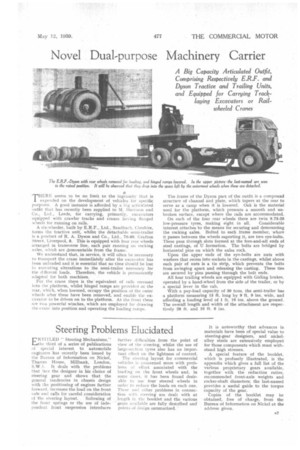Steering Problems Elucidated
Page 41

If you've noticed an error in this article please click here to report it so we can fix it.
Li NTITLED "Steering Mechanisms," the third of a series of publications at special interest to automobile engineers has recently been issued by the Bureau of Information on Nickel. Thames House, Millbank, London, S.W.1. It deals with the problems that face the designer in his choice of steering gear and shows that the general tendencies in chassis design with the positioning of engines farther forward, increases the load on the front axle and calls for careful consideration
of the steering layout. Softening of the front springs or the use of independent front suspension introduces
further difficulties from the point of view of the steering, whilst the use of large-section tyres also has an important effect on the lightness of control.
The steering layout for commercial vehicles is concerned more with problems of effort associated with the loading nil the front wheels and, in some cases, it has been found desirable to use four steered wheels in order to reduce the loads on each one. These and other problems in connection with steering are dealt with at length in the booklet and the various 'gears available are fully -deseribed and points of design summarized..
It is noteworthy that advances in materials have been of special value to steering-gear designers, and nickelalloy steels are extensively employed for those components which must withstand high stresses.
A special feature of the booklet, which is profusely illustrated, is the appendix which gives a. full list of the various proprietary gears available, together with the reduction ratios, recommended front-axle weights and rocker-shaft diameters; the last-named provides a useful guide to the torque capacity of the gear.
Copies of the booklet may be obtained, free of charge, from the Bureau of Information on Nickel at the address given.














































































